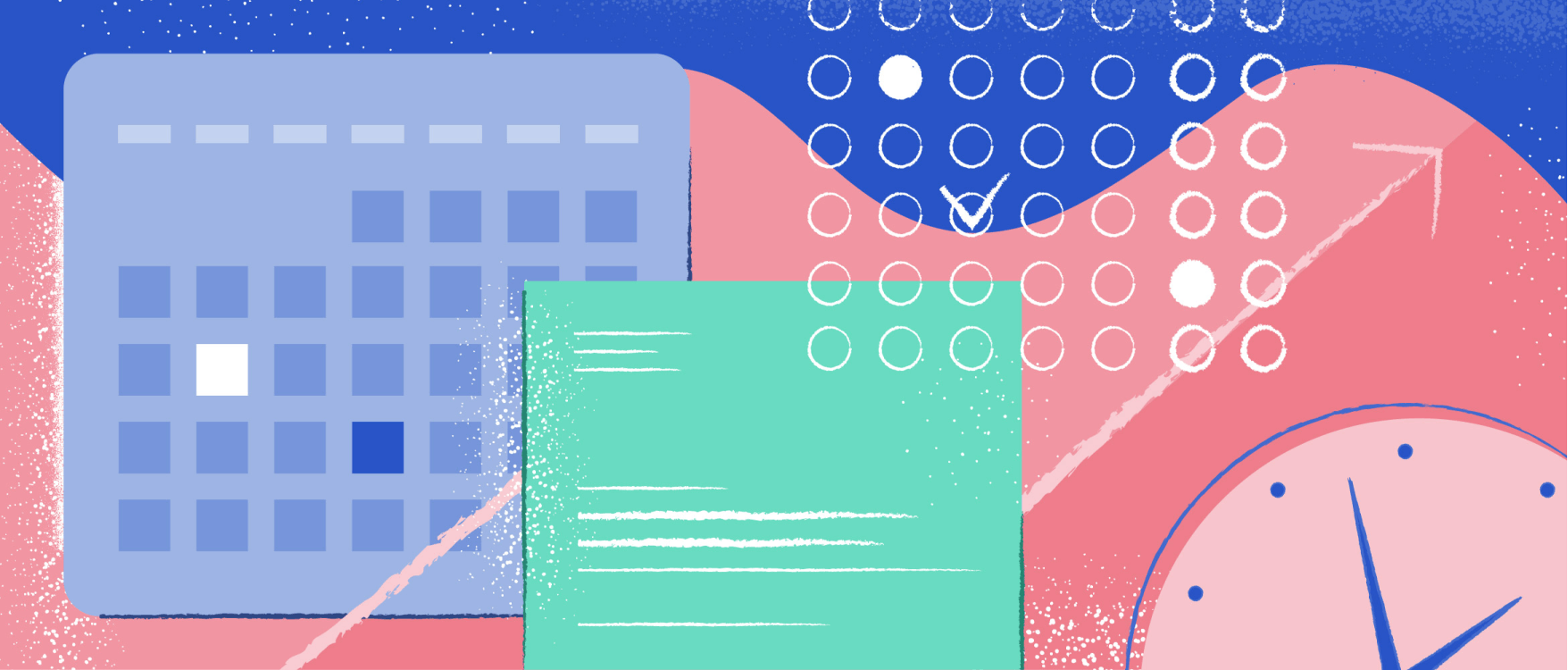
- All
- Tools
- Analytics
- Technical Analysis
- Trading
- Blockchain
- DeFi
- Guides
- Company News
- Educational
- Opinion
- Price Predictions
- Market News
- News
- Trading cases
- Practical guides
- Exchanges
- Trading signals
- Cryptocurrency
- Crypto bots
- Other
Become a crypto master
Learn everything about crypto,
trading and bots

Introduction to Trading: What Is Trading and How It’s Done
In this simple guide, we cover the basics of trading. What is trading, what types of trading are there, why start trading at all, and how to do it are just some of the questions you’ll find answers to below.
Start Trading on 3Commas Today
Get full access to all 3Commas trading tools with free trial period

What is trading?
Trading in general is a transaction between two or more entities, where one sells and one buys. The concept had appeared long before money was invented: goods and services were first bartered when the concept of money didn't exist.
If you hear someone talking about trading today, odds are they’re discussing financial markets. In the modern world, trading mostly refers to buying and selling financial instruments for profit.
How do traders make money?
Traders buy an asset and then sell it at a higher price, or sell it first and then buy at a lower price, usually within a short period of time. Since they don’t know exactly what the future price will be, their success in the trading world depends on the accuracy of their predictions.
For example, let’s say you decide to make some money by speculating on Tesla (ticker TSLA) stock. Tesla seems to be a perfect candidate for that purpose, since its shares are highly volatile and can be affected by a mere tweet of its infamous founder. Say you buy 10 shares on April 1st when the price per share is at $661. The next day, the price goes up to $691. You sell your assets and make a profit of $300. On April 4, the price goes down to $670, so you buy them again, only to sell them a day later at $683 per share.
Trading may sound risky, as there’s no way to know exactly what the future holds. However, one can make informed investment decisions based on past and present analytics. Unlike in gambling, the future of a company share or a cryptocurrency is never a pure chance. Financially savvy traders take a strategic approach and analyze market signals and specific metrics to mitigate risks.
How does trading work?
Nowadays, most of the action now takes place online. As computers continue to develop, more and more transactions are moving from the physical to the virtual world. Even trades themselves are often performed by programs rather than us humans.
So-called algorithmic trading, or algo trading, happens when computers buy and sell assets automatically according to pre-set criteria. Algorithmic trading dominates the US stock market, where about 80% of the trades are done by machine.
How is trading different from investing?
When deciding on how to multiply your savings, you basically have three options: invest, trade, or open a bank account. Alternatively, you could hide the money under the mattress, but then your purchasing power will eventually decrease because of inflation, meaning that you’ll be able to buy less with the same amount of money.
Trading and investing are two different ways of making a profit by allocating your available funds. Investors build wealth by buying an asset and holding it for a relatively long period of time, usually years. For example, say as an investor you saw potential growth in Apple (ticker AAPL) after they announced the iPhone 4. At the time, its shares were sold at $7.57 per share. Now in 2021, the price is $124, so your patience would have paid off.
Traders buy and sell assets, frequently benefiting from sudden changes in prices. Depending on the trading style, positions may be held for various periods, from a few minutes to a few months. Unlike the investor from our previous example, who's been holding AAPL for over 10 years, a trader would have done thousands of buy and sell orders for that time.
In brief, traders make quick returns from short-term price fluctuations, while investors stay in the market through its ups and downs.
Trading or investing: which one is better?
There are examples of famous people who made a fortune both in the investing and trading worlds. You’ve most likely heard of Warren Buffet, who made his money by investing in stocks and holding them for decades. George Soros, on the other hand, gained profit with numerous trades.
The truth is you don’t have to choose between investing and trading—by doing both you can diversify risks. Long-term investing will help you avoid risks caused by impulsiveness and impatience, while with short-term trading, you can always sell a poorly performing asset (this can be done automatically through a Stop Loss).
The advantages of trading
Active trading takes more time than passive investing, as it involves entering and exiting positions frequently. Here's why it’s worth the extra effort:
Traders can get higher returns
Frequent transactions tend to generate returns that outperform long-term investing. While an investor may hope to make 10-15% per year, traders may see these results per month. Even generating 5% per month will lead to an annual return of 60%.
Traders can leverage falling markets
Traders can make money by predicting either success or the failure of an asset. If you expect the price to drop, you can sell the asset short, that is, borrow and sell it first and buy at a lower price later. Investors, on the other hand, get returns only when assets in their portfolio increase in value.
Traders enjoy recurring profits
When you buy and sell repeatedly, likely using a trading bot, you can enjoy frequent recurring profits. By reinvesting them, you will gradually increase your trading capital base and get higher returns with it.
Traders make money fast
An investor’s time horizon is measured in years, while traders can think in terms of days or even minutes. It’s true that an investment may pay dividends on a regular basis, but these are nothing compared to what a trader can make right away.
Types of trading
Today, all sorts of assets can be traded, from simple goods to various intangible assets in the financial market. Here are the main types of trading divided by the marketplace:
Stock trading
In order to expand, corporations need to raise money, and they do so by selling stocks. These are often called shares, since holders get to share ownership of the company. The buyers make a profit when the company grows its revenue. The opposite is also possible: traders can make money by forecasting a stock slide.
Stock traders may hold positions for as little as a few seconds (there’s a term for that, HFT or high-frequency trading) or minutes. They need to monitor the situation constantly in order to seize the right moment to buy or sell. When making transactions, traders pay brokerage commissions, which may eat away at the returns.
Just like with other financial assets, it’s possible to trade shares with or without owning them. The latter can be done through an option, a contract that gives a trader the right to buy or sell the asset at a specific price in the future.
Cryptocurrency trading
A cryptocurrency (or “crypto”) is a virtual currency that can be used to buy goods or services. The word derives from encryption algorithms that make crypto secure for online payments. Most cryptocurrencies aren’t issued by a central authority, which makes them immune to manipulation by governments and banks, these are known as “decentralized” cryptocurrencies.
Because of their high volatility, cryptocurrencies are both extremely profitable and risky. For example, between March 2020 and March 2021, the price of Bitcoin rose to a maximum of $61,179 and fell to a minimum of $5,181. Because of their huge potential, cryptocurrencies have become so popular for trading that the market capitalization rose from $10 billion in 2013 to $758 billion in 2020.
Say you buy one Bitcoin (BTC) fot $30,000. If the day price then goes up by 30% to $39,000, your BTC would also increase by 30%. But since the crypto is volatile and you don’t know if it will keep on rising or not, you sell it and make $9,000 profit.
Forex trading
Forex trading is an abbreviation for foreign exchange, also known as FX, meaning that foreign currencies are traded against each other.
Traditional currencies are extremely sensitive to economic and geopolitical movements. There are correlations between different currencies, and the values are very difficult to predict even for economists. For one, the father of World Bank and Keynesian economics, John Maynard Keynes, was successful as a stock manager, but struggled as a foreign-exchange trader.
Let’s say it’s early 2020 and the virus is spreading in the province of Hubei in China. This impacts expectations of the country’s economic growth, and the Chinese yuan keeps weakening. In May, however, the virus seems to be more under control, so you decide to buy Chinese currency. The USD/CNY pair is trading at 7.16 and you buy ¥100,000. In July, China experiences an economic rebound, while the US is hit by the second wave of the virus. You decide to close your long trade and sell ¥100,000. This time, the rate is 6.75, so your profit is ([¥100,000 : 6.75] – [¥100,000 : 7.16]) = $848.
When analyzed afterwards, the example above seems pretty obvious; however in reality, it’s more like strong intuition and luck.
Commodities trading
Commodities are raw materials that can be grouped into four main categories: energy, metals, agricultural commodities, and livestock and meat. Since these are physical assets, their supply can be disrupted by a number of events, which brings more risks and opportunities with it. For example, agricultural commodities rely heavily on the weather, while livestock prices can spike because of health issues with cattle.
Commodities are often traded through a futures contract. This is an agreement to buy a certain volume of raw materials at a specific price and date in the future. Farmers use futures contracts to guarantee a fixed income at harvest time. If the price then increases, the trader will make a profit, while the commodity producer will get the agreed price.
How to make money trading
To take advantage of price movements, you will need to know what drives prices skyward or down towards rock bottom. It all boils down to understanding the various market forces at play. Here’s how you can get started:
Knowledge is power
Start from the very beginning: learn the basics of trading, get to know the chosen marketplace(s) and the specific asset you’re interested in. For example, if you’d like to start crypto trading, check the market capitalization and other available data on the chosen cryptocurrency.
Decide on a trading strategy
Finding a trading strategy that suits you is crucial. There is no one-size-fits-all solution, and the choice mainly depends on your time frame and traded products. Choose a strategy, then test it under different conditions to understand if and when it works.
Employ trading bots
When dealing with volatile markets, it’s difficult to react quickly to price fluctuations. To avoid slowdowns, you can take advantage of trading bots that will make trades on your behalf. Trading bots analyze a number of indicators and indices, and do it faster than any human could.
Practice makes perfect
Putting time and effort into theory without committing to practice will hardly work. You can read a lot about the effects of certain events on the market, but some events may be simply unprecedented. Make numerous trades with different strategies and holding periods, then analyze the results and you will eventually get the hang of it.
Start small
The most volatile markets offer high potential for returns, but more risks with it. The rule of thumb here is to never risk more than you’re willing to lose. Avoid playing high stakes and trade a couple of products first to understand how they behave.
Learn from others’ experience
Perhaps the easiest way to start trading is to follow in the footsteps of seasoned traders. This can be done through trade signals, triggers that activate a bot to buy or sell an asset.
FAQ
Trading is making a profit with short-term deals. Today, most transactions are performed automatically by trading bots.
You can trade shares, traditional and cryptocurrencies, and commodities. You can also trade assets without owning them, for example by using options and futures contracts.
The main difference is the period of time you’re going to hold your assets. Investors are willing to buy assets and hold them for a long period of time, usually years. Traders make deals as often as possible.
In 2023, trading landscapes are witnessing unprecedented dynamism, spurred by the continuous evolution of technology and the emergence of diverse asset classes. The amalgamation of AI, blockchain technology, and advanced analytics is refining trading strategies, enabling real-time decision-making and fostering market resilience. Additionally, the prevalence of decentralized finance (DeFi) is broadening access to financial instruments, empowering a new wave of traders to navigate markets with enhanced autonomy and flexibility. This year, the intersection of innovation and trading is poised to unlock novel opportunities, catering to the varied needs of seasoned traders and novices alike.

A proven leader, successful at establishing operational excellence and building high-performance teams with a sharp focus on value creation and customer success.





